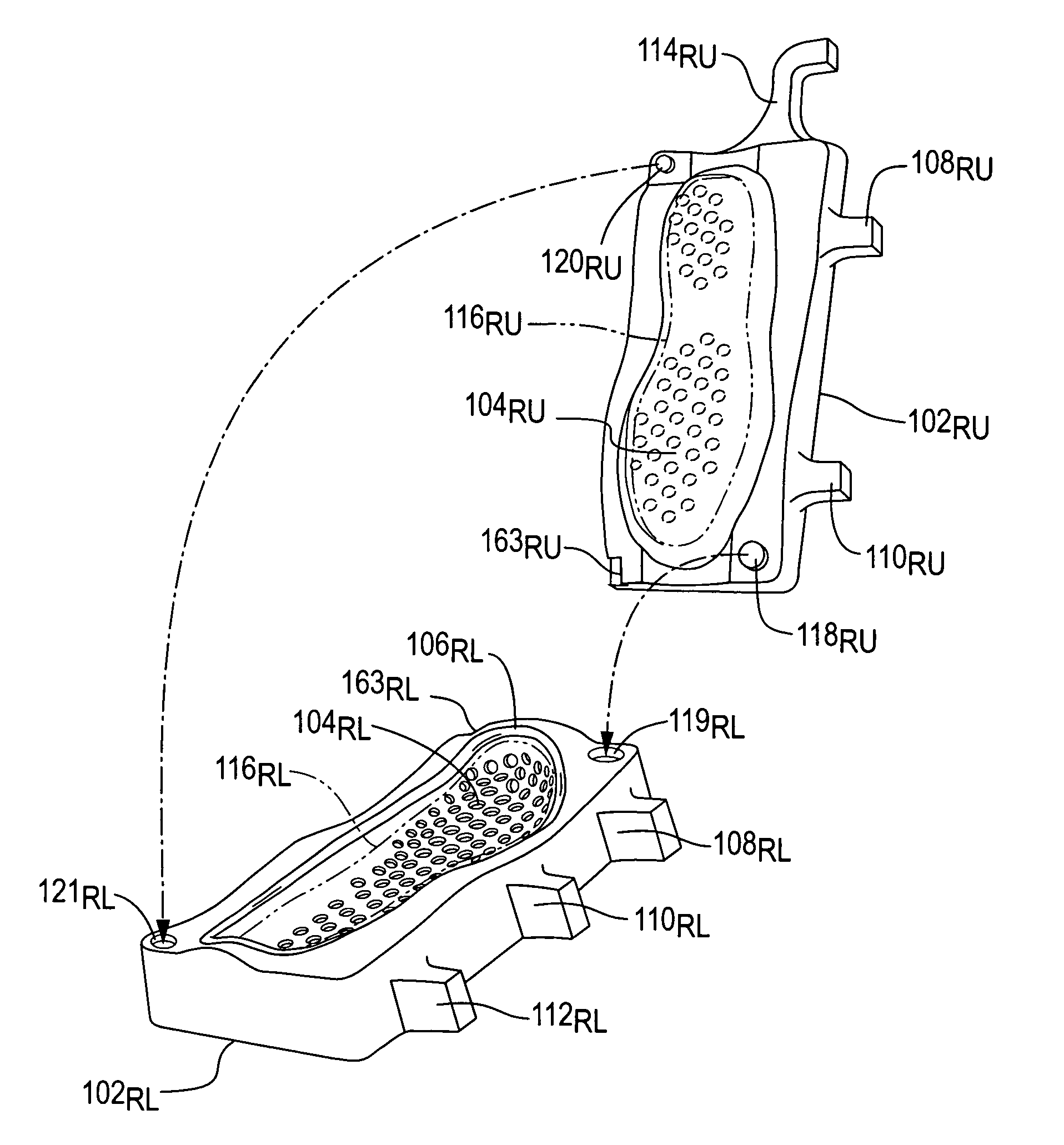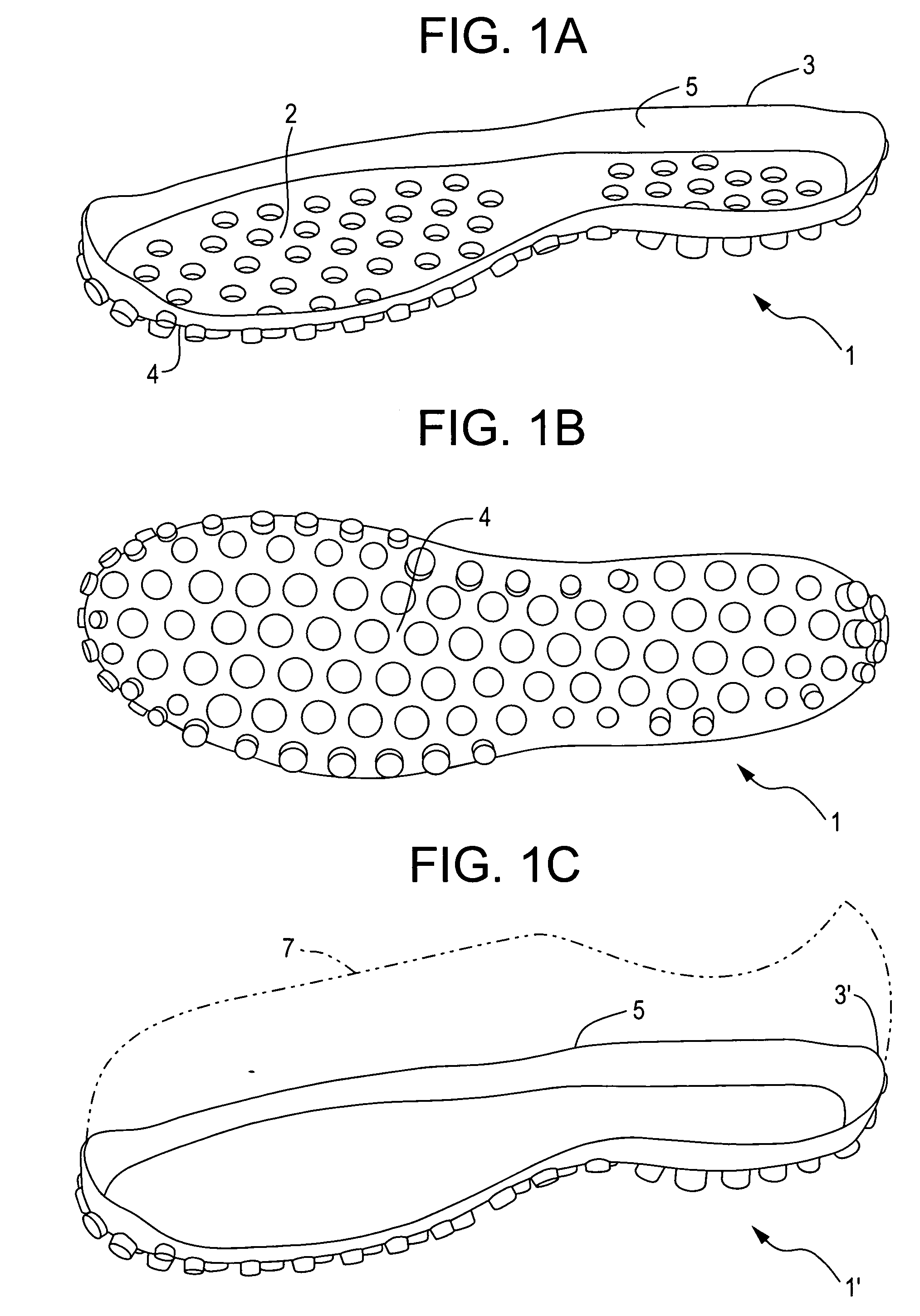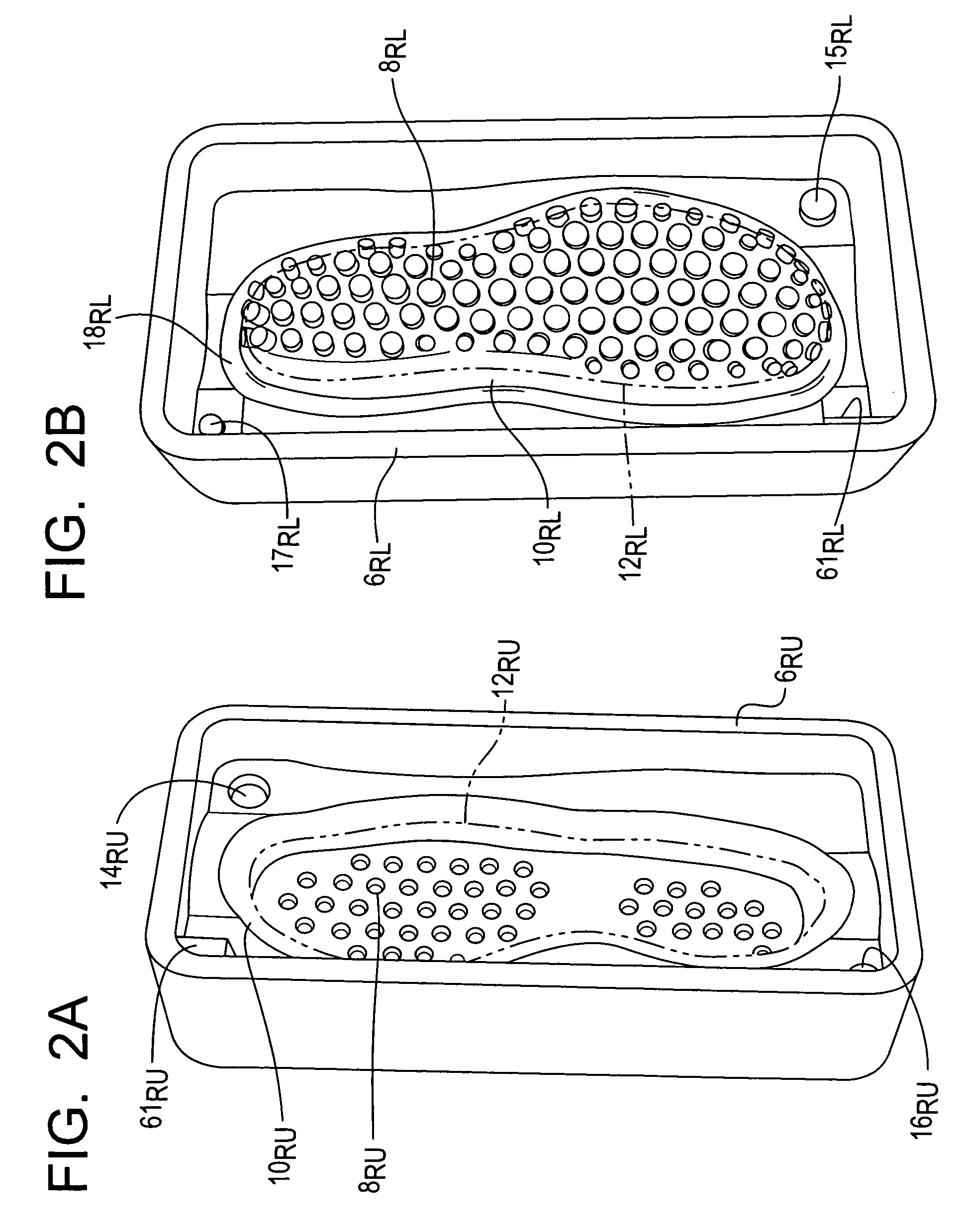Method of making a multi-element mold assembly for, e.g., footwear components
a multi-element mold and mold assembly technology, applied in the direction of manufacturing tools, foundry molds, foundry patterns, etc., can solve the problems of increasing manufacturing costs, requiring extra labor to remove flash from molded parts, and affecting the appearance of the produ
- Summary
- Abstract
- Description
- Claims
- Application Information
AI Technical Summary
Problems solved by technology
Method used
Image
Examples
Embodiment Construction
[0017] A method for creating a shoe outsole mold assembly is described herein as an example of certain embodiments of the invention. The invention is not limited to the embodiments described herein. The invention also includes methods for creation of molds to form other shoe components. Indeed, embodiments of the invention may also be used to create molds used to manufacture parts unrelated to shoes.
[0018] So as to provide an overview of at least some embodiments of a method for making an outsole mold assembly, FIG. 8 is a flow chart outlining steps of that method. Beginning at step 200, an outsole for a pair of shows is designed. This typically involves designing a tread configuration for the lower surface of the outsole, and may involve designing a special configuration for the upper surface of the outsole. Generally, outsoles for left and right foot versions of the shoe are designed (i.e., the left foot version is a mirror image of the right foot version). At step 202, master pa...
PUM
| Property | Measurement | Unit |
|---|---|---|
| volume | aaaaa | aaaaa |
| mold volume | aaaaa | aaaaa |
| shape | aaaaa | aaaaa |
Abstract
Description
Claims
Application Information
 Login to View More
Login to View More - R&D
- Intellectual Property
- Life Sciences
- Materials
- Tech Scout
- Unparalleled Data Quality
- Higher Quality Content
- 60% Fewer Hallucinations
Browse by: Latest US Patents, China's latest patents, Technical Efficacy Thesaurus, Application Domain, Technology Topic, Popular Technical Reports.
© 2025 PatSnap. All rights reserved.Legal|Privacy policy|Modern Slavery Act Transparency Statement|Sitemap|About US| Contact US: help@patsnap.com



